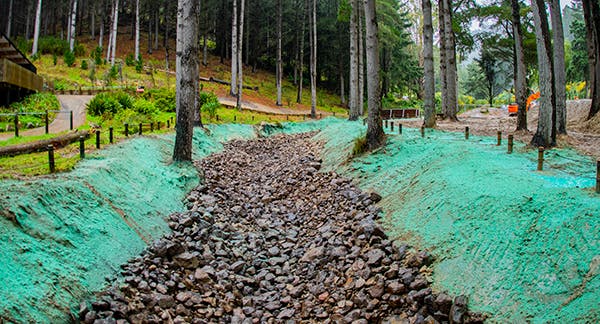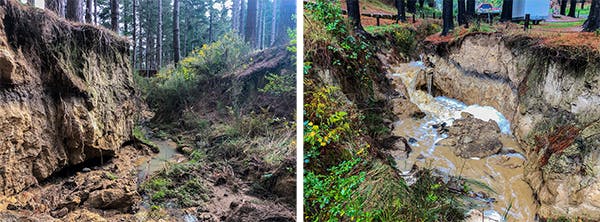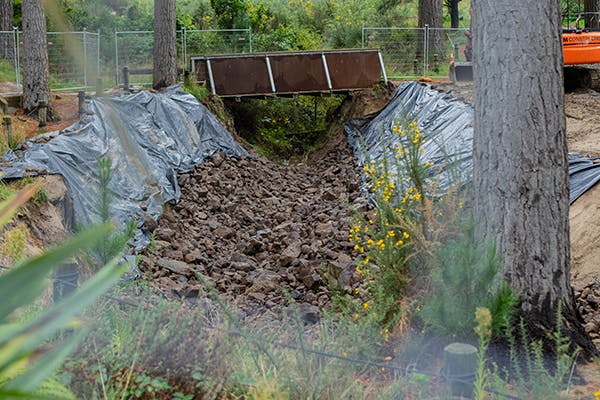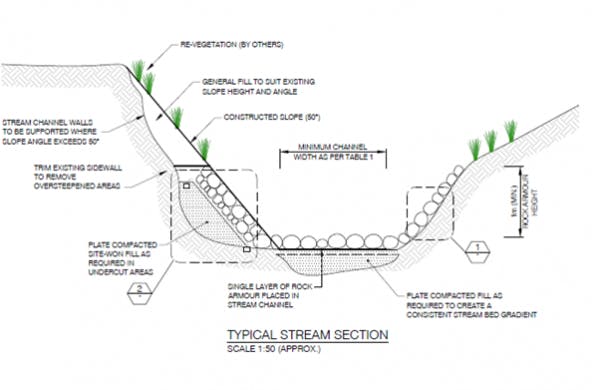The Stream Rehabilitation Project

Port Hills Soils
- The soils of the Port Hills are prone to severe erosion, especially when they are exposed to disturbance
- The soils are composed of very fine particles called loess
- Loess has a high percentage of sodium - the chemical composition of loess means it stays suspended in water and doesn’t settle out.
- The Port Hills were originally covered with forest, but fires centuries ago, and more recent agricultural and urban development have exposed their easily erodible soils.

Cashmere Stream
- Christchurch Adventure Park is in the Cashmere Valley which is a tributary of Cashmere Stream.
- Although Cashmere Steam rises from springs on the Plains, over half its catchment is ephemeral tributaries draining the Port Hills.
- The Cashmere Stream catchment comprises 2,800 ha with nearly 50km of drains and tributaries.
- Suspended sediment is the biggest water quality issue for Cashmere Stream.
- It is the hill tributaries that account for the poor water clarity in Cashmere Stream – especially Worsleys Drain, Cashmere Valley Drain, No 3 Drain, and Hoon Hay Valley Stream.
- Erosion in the Cashmere Stream hill catchments has increased in recent years because of:
- Increased frequency and intensity of rain causing slips, slumps and stream-bank collapse
- Change in vegetation cover or vegetation removal, including forestry harvest
- Track and road construction
- Subdivisions and housing development
- Erosion has been exacerbated by the 2010-11 earthquakes and the 2017 fires
Effects of sediment
- Cashmere Stream is a major contributor of sediment into the Ōpāwaho/Heathcote River - in rain events sediment enters Cashmere Stream and moves down into the Ōpāwaho/Heathcote River and on into Ihutai/Avon-Heathcote Estuary.
- Sediment in a stream is natural, but too much can cause problems.
- Excess sediment affects the ecological health of the rivers.
- Suspended sediment can alter the water chemistry, cause temperature decreases and turbidity increases.
- Sediment blocks light - and photosynthesis in aquatic plants is reduced
- It can harm fish gills and filter-feeding invertebrates
- Deposition of sediment may change the character of the river bed and smother habitat
- It destroys the habitat where the smallest stream organisms live and causes declines in fish populations

Stopping erosion
- There is no single measure that will significantly reduce sediment input
- The best long-term way to reduce sediment is to stop erosion happening
- Growing native trees is a long-term solution – especially in the hill tributaries
- Focus on revegetation of the steeper and most erodible slopes in the catchment
- The lower reaches of hill tributaries are transformed into shallow, wide wetlands
- All tributaries are fenced and planted.
- In the shorter term rehabilitation of erosion sites makes a difference
- In CAP, stream-bank erosion is a significant sediment source
- In rain events the fine-textured sediment in the stream bank is likely to be eroded and transported directly into stream channels
- Armouring the stream banks and planting the riparian edge will reduce this risk of bank erosion.

Stream remediation plans

